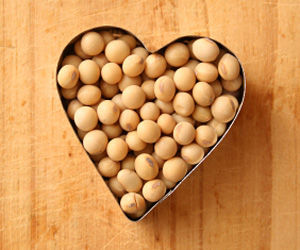Two types of fat are naturally present in human blood. These two types are cholesterol and triglycerides. Both fats are essential for the body, but in case that optimal values are exceeded health problems may arise (cardiovascular complications).
Fats in the blood explained
Cholesterol is a waxy substance which is insoluble in water. Cholesterol is mainly produced by liver (about 80% of total cholesterol), the missing part is introduced into the body with food (about 20% of total cholesterol).
Cholesterol is an essential component of cells and participates in some hormonal processes. Because of its insolubility in water, the vascular system transmits cholesterol bound to protein in the form of particles called lipoproteins.
There are 3 types of lipoproteins: a low-density lipoproteins (LDL), very low density lipoproteins (VLDL) and high density lipoproteins (HDL). In relation to the human organism LDL and VLDL are treated as harmful by allowing the accumulation of cholesterol on arterial walls whereas HDL is treated as protective lipoprotein because it’s main task is to get rid of excessive cholesterol (accumulated on arterial walls).
Triglycerides are present in very low density lipoproteins (VLDL). Body uses them to store energy in adipose tissue.
Optimal amount of cholesterol in the blood are the following:
For EU:
- Normal cholesterol level is anything under 5 mmol/l.
- Normal HDL cholesterol level is anything above 1,1 mmol/l.
- Normal LDL cholesterol level is anything below 3 mmol/l.
For US:
- Normal cholesterol level is anything under 200 mg/dl.
- Normal HDL cholesterol level is anything above 40 mg/dl.
- Normal LDL cholesterol level is anything below 100 mg/dl.
Negative effects of increased cholesterol levels
Excess cholesterol (especially LDL) is particularly problematic in its accumulation in the artery walls, causing them to tighten and in the worst case cause a blockage which my lead to stroke. The process of cholesterol deposits in the arteries is called atherosclerosis, it’s biggest factor is also hypercholesterolemia or excess cholesterol in the blood.
 Consuming soy products will lower your cholesterol levels significantly.
Consuming soy products will lower your cholesterol levels significantly.Because of atherosclerotic, arteries gradually narrow and in the worst case completely clog. Atherosclerosis is the most commonly developed in the walls of blood vessels in the heart or legs and thereby poses a high risk of heart attack or stroke. In case atherosclerosis occurs in the blood vessels of legs arteries – this may cause leg failure.
High cholesterol risk factors
Elevated levels of fat in the blood stream are greatly affected by diet and physical activity as well as obesity, which is also strongly associated with the first two factors. In addition, elevated levels of fat in the blood is also influenced by genetic factors, certain diseases (hypertension, diabetes) and lifestyle (smoking, stress). It is also clear that several factors at once increase cholesterol levels more rapidly.
How to reduce cholesterol levels
The amount of cholesterol in the blood can be reduced in several ways. Of course the most effective way to lower cholesterol levels is by a combination of several activities, among them the most important is physical exercise and proper nutrition.
Moderate physical activity helps a lot in lowering blood cholesterol. If you have not been active previously, begin exercising gradually. Your long-term goal should be at least 30 minutes of physical activity five times a week.
When planning your diet focus on using less of saturated fatty acids and replace them with unsaturated fatty acids such as omega 3 as this will help you in reducing fat in the blood, stabilize atherosclerotic plaques and mitigate the effects of cardiovascular complications. Use olive oil instead of sunflower oil. Fish are a great source of omega 3 fat as well.
Avoid salty foods. Eat lots of vegetables, fruits and other foods that are high in fiber. According to some studies consuming garlic, green tea or soy has a very positive effect on reducing cholesterol levels in the blood.
Cholesterol-lowering drugs
Reducing cholesterol levels using drugs should be the last resort. All other natural measures should be considered first including healthy diet and regular physical activity.
Medicines to lower cholesterol and triglycerides in the blood are divided into several groups. The most effective and the ones with least side effects are statins. Fibrate are more effective in lowering cholesterol levels but are less tested and therefore not recommended.
Statins inhibit the synthesis of cholesterol in the liver and at the same time reducing the level of LDL in the blood, while fibrates reduce particularly triglycerides in the blood and increases the beneficial HDL. When patients can not tolerate treatment with statins (or treatment with a lower dosage of statins), cholesterol absorption inhibitors or ion exchangers may be used.
There are several reports of statins having negative effects. People reported that using statins caused them muscle pain, muscle weakening and fatigue. There are also reports of heart failure because of statin use. Impairment of muscle is a frequent side effect of statin drugs.
Prevention is very important
Lifestyle plays a big role! Young people should avoid bad habits such as smoking and excessive alcohol consumption, while eating healthy and doing sport – this leads to improved cardiovascular fitness (later life).









































